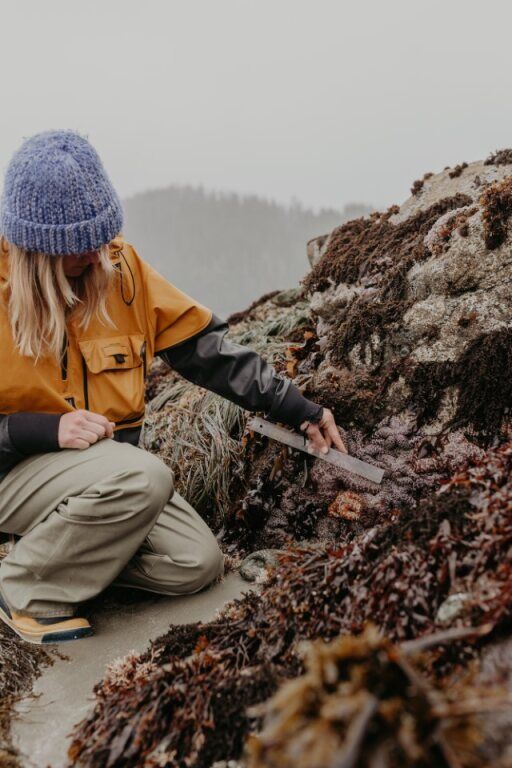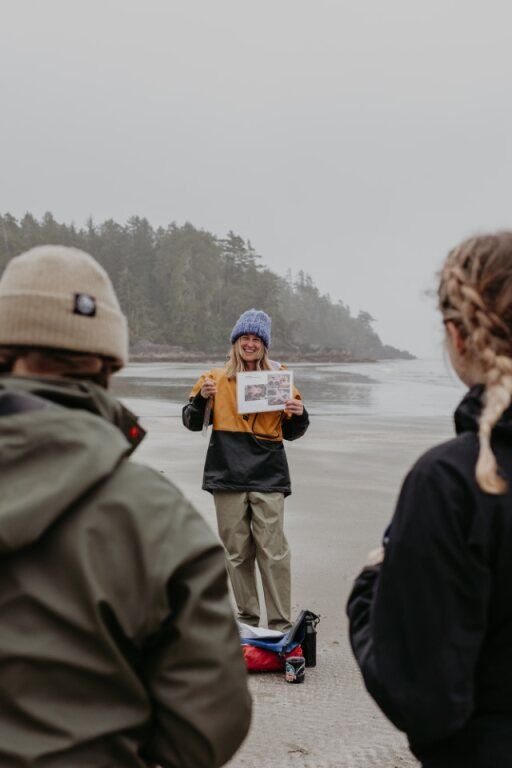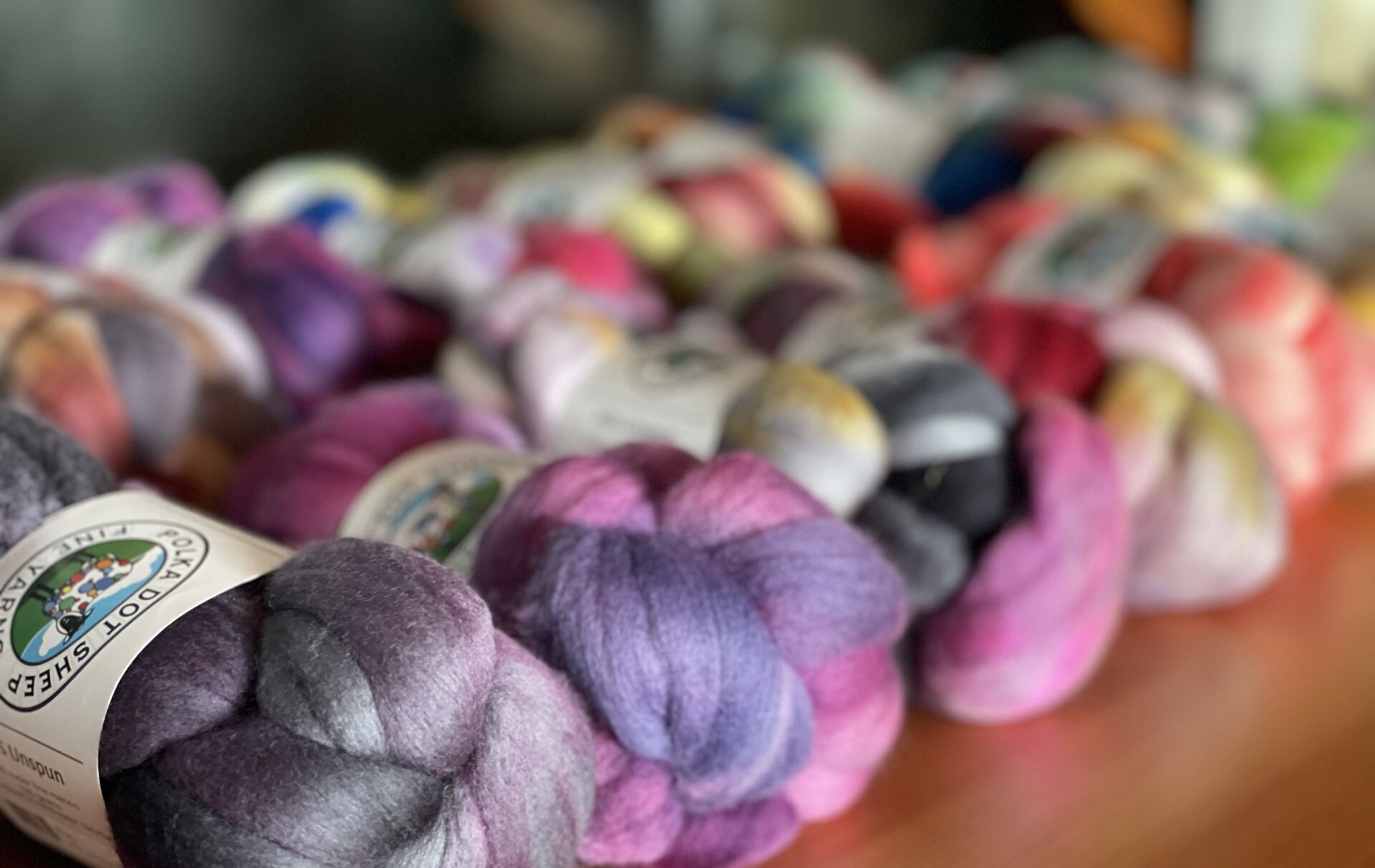Sea Star Stewardship with Redd Fish Restoration Society
2024 is the 10th year of sea star surveys at Tonquin Beach! Every month during the summer, a dedicated team of volunteers led by Redd Fish Restoration (previously led by SIMRS) gathers in the intertidal zone as part of the Sea Star Stewardship Program, which monitors Sea Star Wasting Syndrome (SSWS) all over Western North America. This syndrome has decimated the sea star population, causing sea stars to waste away.

Since its first appearance in 2013, Sea Star Wasting Syndrome has wreaked havoc on sea star populations along the west coast of North America, including Vancouver Island. The Sunflower star (Pycnopodia helianthoides) has been hit hardest, with its population plummeting by over 90%, leading to its classification as critically endangered by the International Union for Conservation of Nature (IUCN). By consistently recording the health of sea stars in intertidal zones, we can use the data to better understand the effects of SSWS. This syndrome poses a significant threat to coastal ecosystems, as both Ochre and Sunflower stars are vital keystone species. (Fun fact - sea stars were actually the inspiration that coined the term “keystone species”!) Sunflower stars help maintain kelp forest health by preying on kelp-grazing organisms like urchins, while Ochre stars (Pisaster ochraceus) enhance biodiversity in rocky intertidal areas by consuming mussels, barnacles, and other sessile organisms, creating space for diverse marine life.
Despite the devastating impact, the exact cause and transmission method of SSWS remain unclear. Initially, a densovirus was suspected, but recent theories suggest that warming waters and increased organic matter might promote bacterial growth, depleting oxygen on the sea stars' surface and preventing them from breathing, which could lead to wasting symptoms. Affected sea stars often appear "melty" with white spots and can lose limbs. Once SSWS starts, it progresses rapidly, often leading to death within days - that’s why it’s so important to monitor populations consistently.

Sea stars, while not economically valuable like Pacific Salmon or Killer Whales, play an indispensable ecological role. Because of this perceived lesser value, there is a lack of organized research efforts - so ongoing research into SSWS is crucial. Citizen science programs like the Sea Star Stewardship Program are vital for advancing our understanding of this syndrome at regional and global levels.

After meeting in the parking lot and walking down to the beach together, volunteers are trained to gather data on population, diversity, sea star size, and disease severity. The instructor explains some background information about SSWS, what to look out for, and how to perform the survey. The group is separated into pairs consisting of a recorder and a sampler. Each pair is assigned an area of the beach to survey sea stars. Only sea stars that are fully visible and out of the water are measured. The sampler will use a ruler to measure the length from the centre of the sea star to the tip of one arm. They will call out the measurement and status (healthy, or mild/moderate/severe wasting) to the recorder, who will then note down the data on their sheet. Once the area has been completely surveyed, the sheets are returned to the instructor and the collected data is shared with the Multi-Agency Rocky Intertidal Network (MARINe), which maintains a collaborative database used by scientists across North America to assess SSWS's widespread impacts and guide management decisions. Without the support of citizen scientists, data collection efforts would be significantly hindered.

These citizen science programs not only support scientific research but also offer valuable educational and engagement opportunities for local communities. The Sea Star Program promotes marine stewardship and empowers residents to contribute to the health and resilience of local environments. Additionally, it provides volunteers, many of whom are university students, with practical fieldwork and job experience, enhancing technical knowledge and community capacity.

To get involved with the Sea Star Stewardship Program, check out Redd Fish Restoration or follow their Facebook and Instagram pages. You can also explore the data and research you are contributing to on the MARINe Website. Redd Fish will be leading two more surveys at Tonquin Beach this summer: July 23rd at 8am, and August 21st at 7:30am. Check out our events page to learn more!
By participating in these efforts, you can help safeguard these keystone species and ensure the vitality of our marine ecosystems for future generations.
Sources:
Photos by Jill Nancy on behalf of Redd Fish Restoration Society







